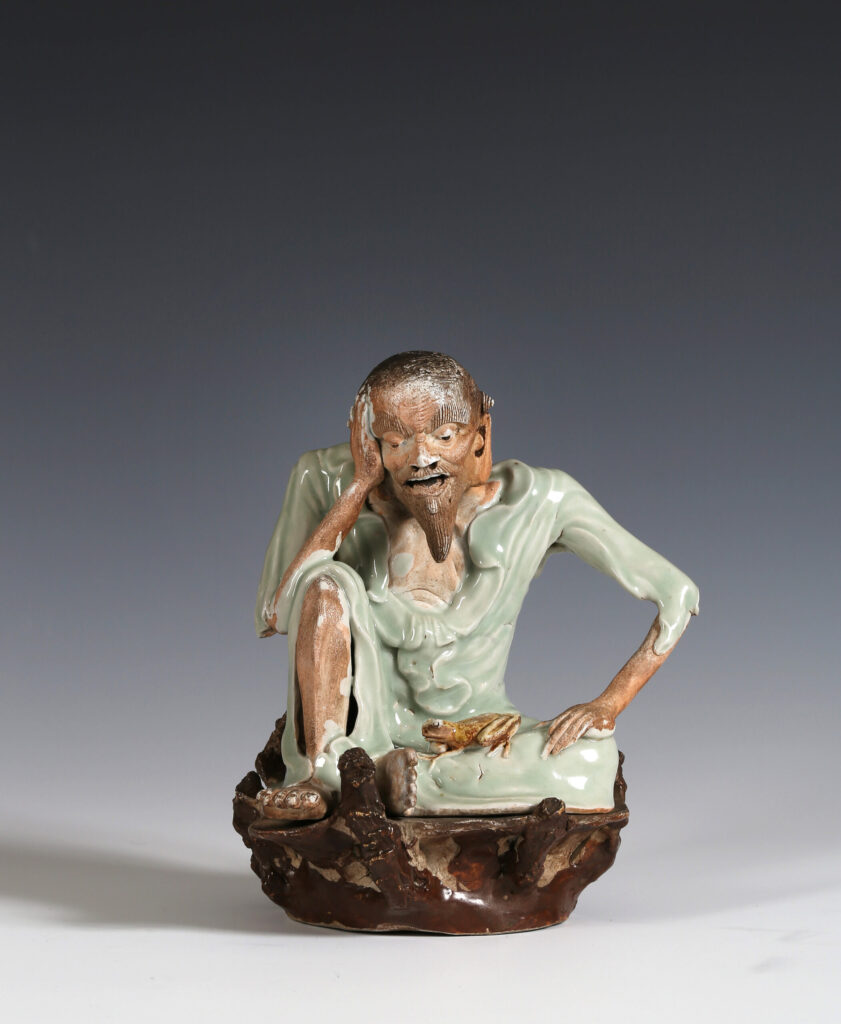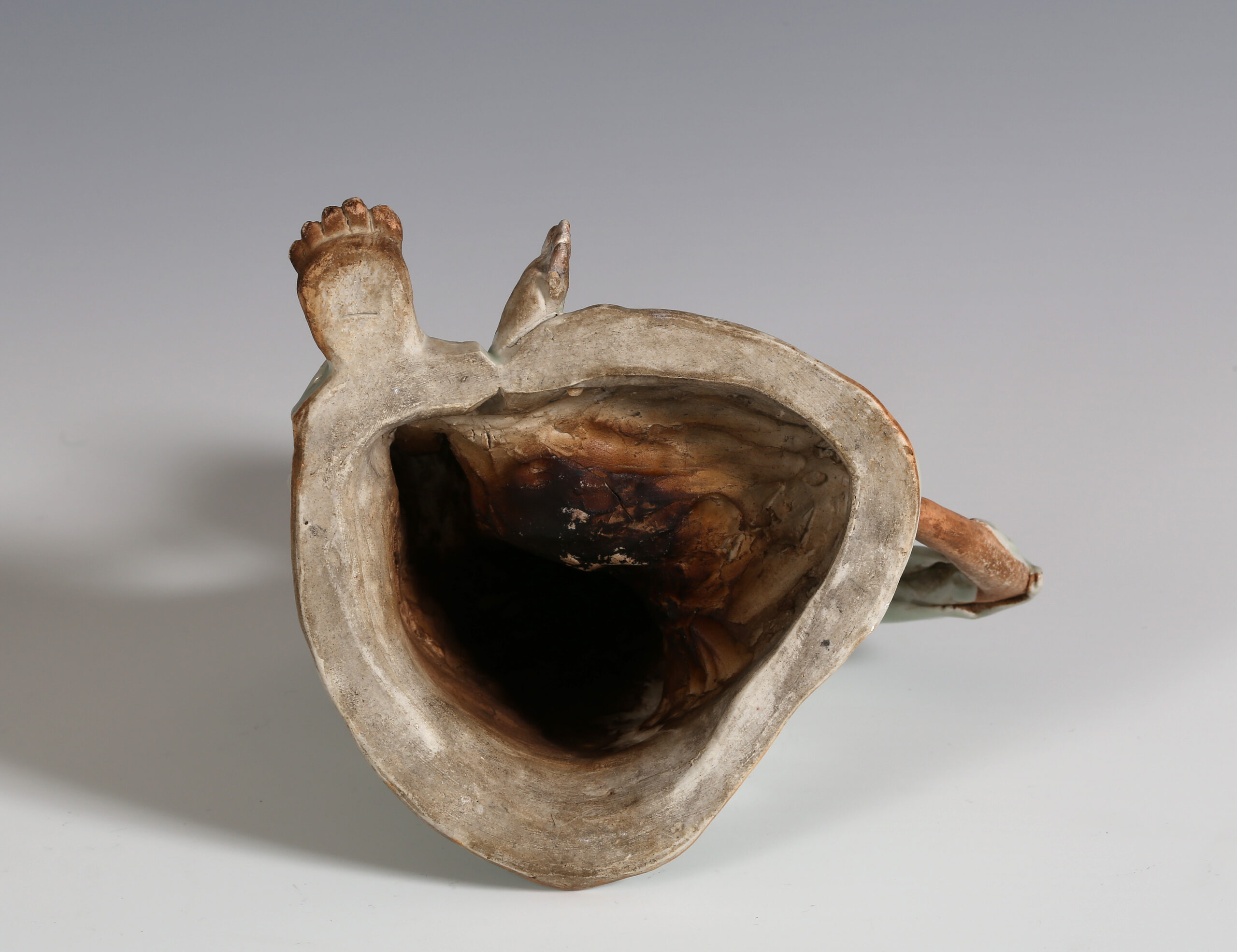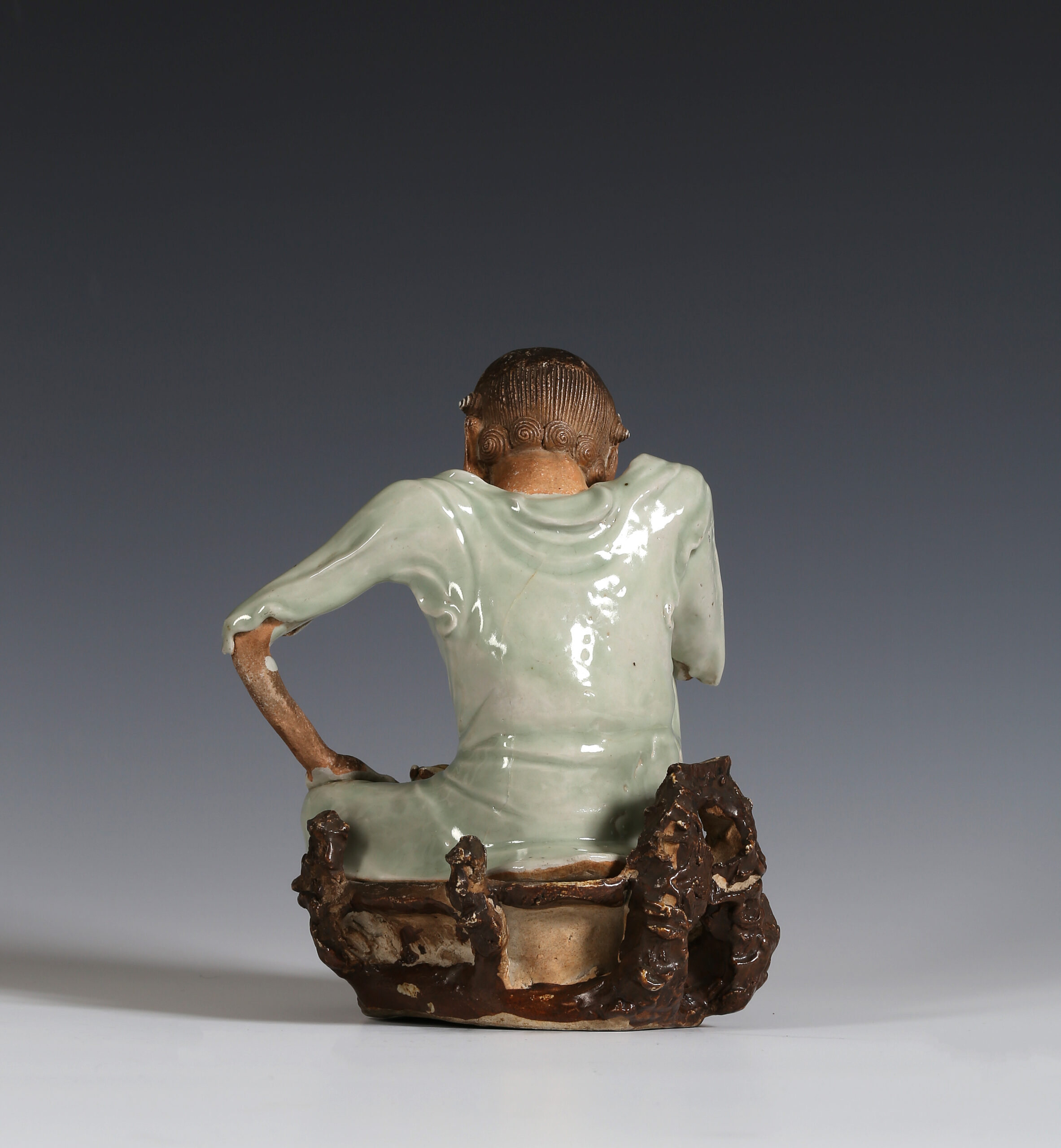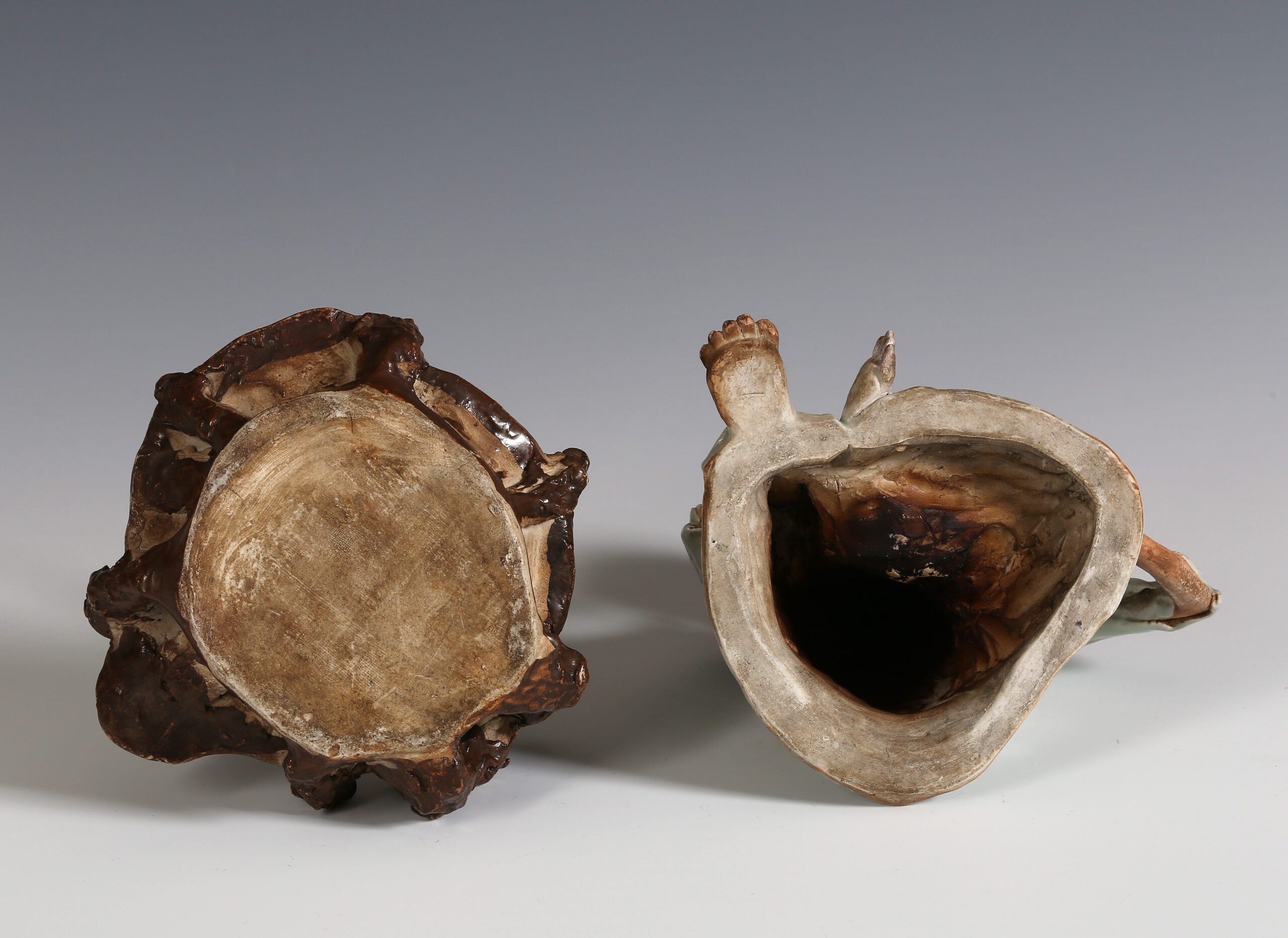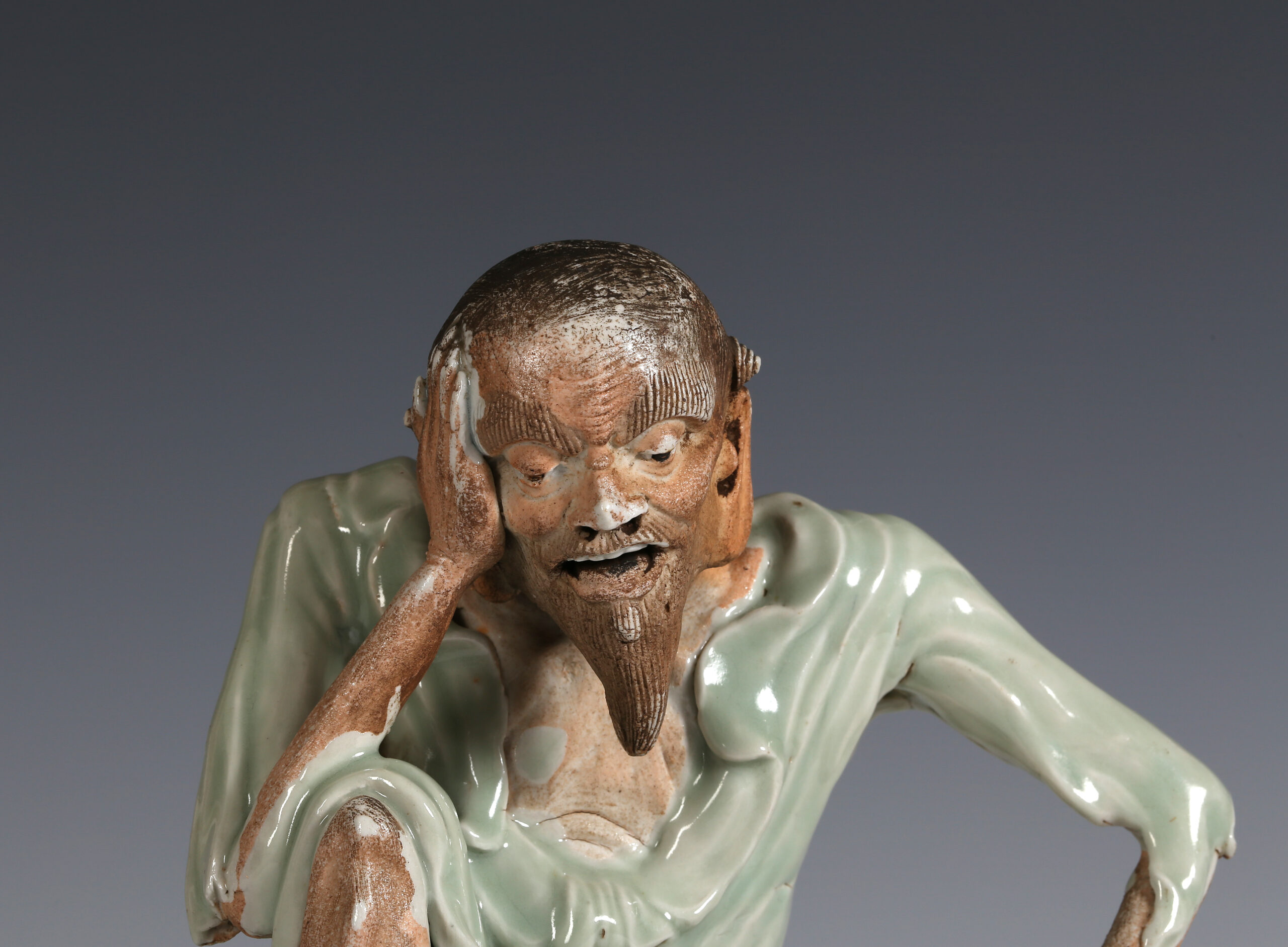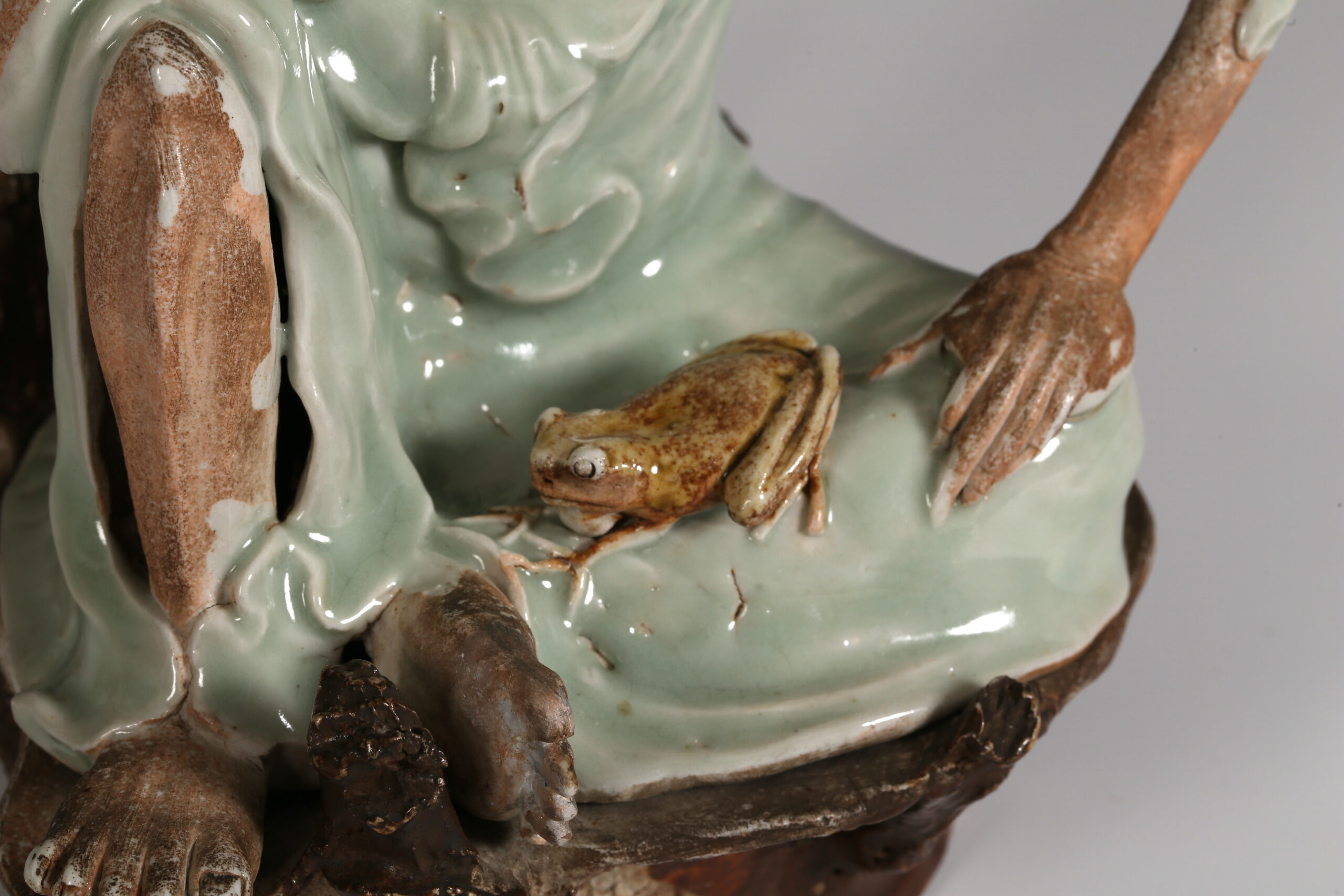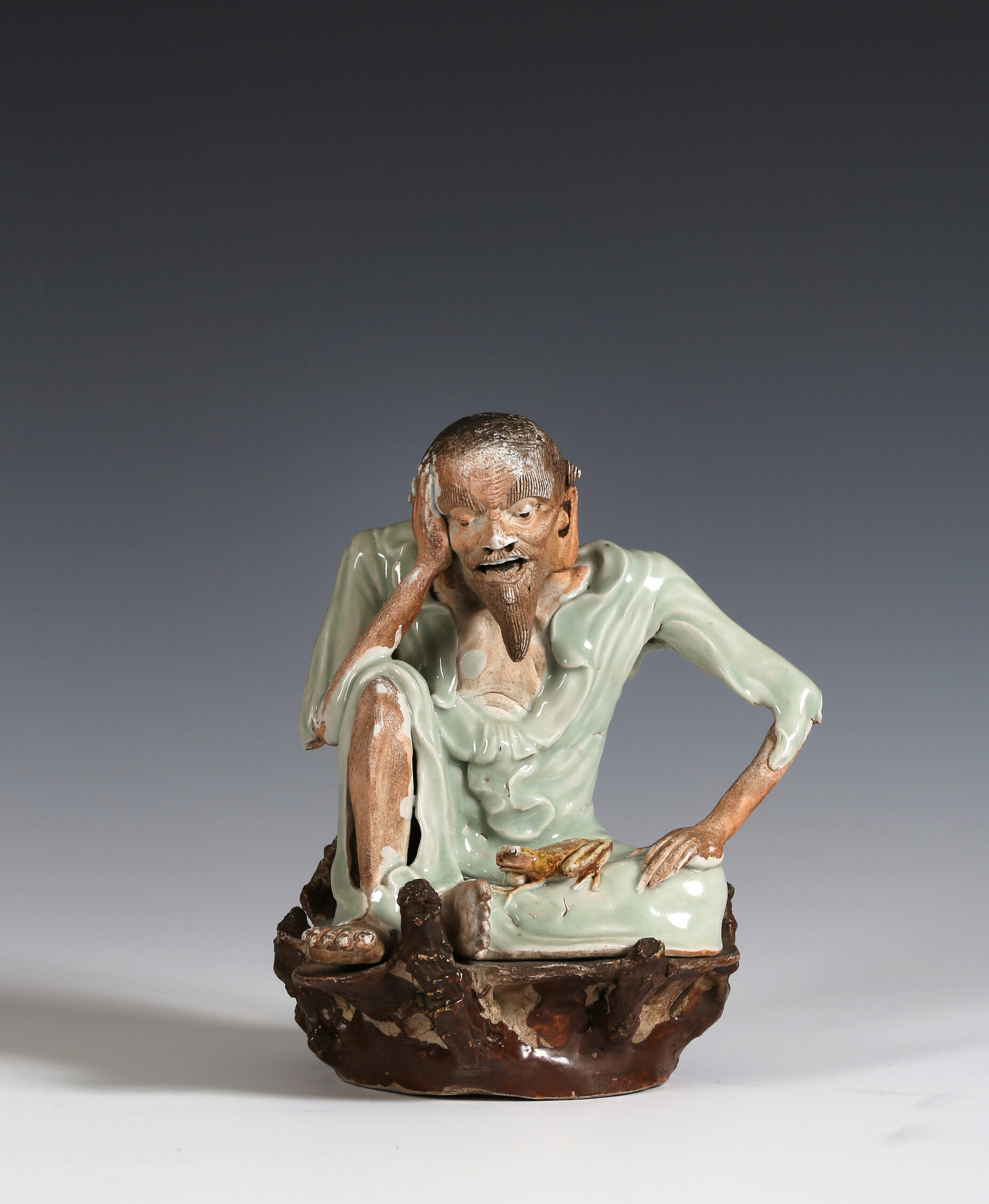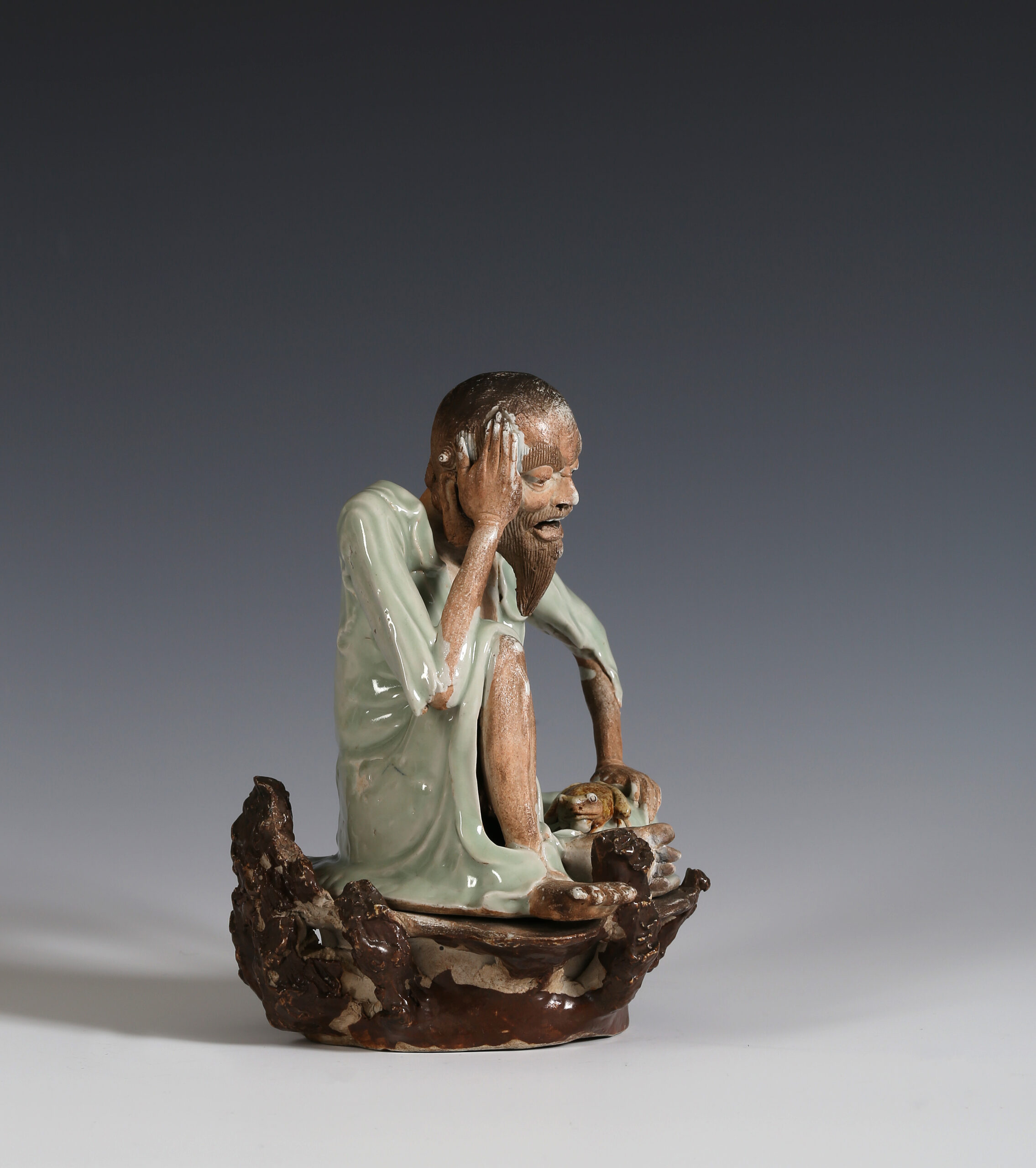An emaciated figure of an ascetic Rakan, seated on an upturned stump with a straw-glazed frog in his lap, his robes under a celadon glaze, his body iron-red tinged biscuit porcelain. Traces of lacquer remaining in the hair. The stump and the figure are made in two separate pieces and has been used as an incense burner.

Other figures of Rakan with celadon and exposed biscuit porcelain are found in a number of great European collections of the late seventeenth and early eighteenth centuries; and are amongst the earliest Japanese porcelains that reached Europe. There are other types of models with similar decorative features, such as shells and ewers that also appear in illustrious European collections of the period. Some of these pieces are decorated with early kakiemon colouring, however this is not the case with the models of Rakan.
The status of Rakan (Arhat in Sanskrit), is the highest title given to disciples of zen Buddhism. They were sometimes disciples of Buddha himself and often legendary figures themselves. These models were made for the domestic market to be venerated, so it is intiguing that some ended up in European collections. The mythology and spiritual meaning behind the figures would have been lost on the European collectors, but they reflect a fascination in the unusual and exotic that was so popular at the time.

A Saint Cloud porcelain model in The Art Institute of Chicago was modelled on a related Arita figure. Ghenete Zelleke first made the connection between this figure and the group of Japanese Rakans in the French Porcelain Society Journal in 2003. While it is not quite the same model as ours, there are enough distinguishing features to show that it is of the same group. Zelleke suggests that the model may have been copied from an example in the collection of the Duc d’Orleans; or that it may have been inspired by one of the many Asian porcelains available in the Saint Cloud shop in Paris.
Other examples of celadon-glazed Rakan figures we have found are in the following historic collections:
Residence, Munich[i]
Schloss Esterhazy, Austria
Palazzo Pitti, Florence
Errdig, Denbighshire[ii]
Chateau de Fontainbleu, Chinese Museum
Mnichovo Hradiště Castle, Czech Republic[iii]
Porzellansammlung, Staatliche Kunstsammlungen Dresden
We know of two examples with 18th century French ormolu mounts:
Ormolu-mounted example sold in 1756 from the collection of Joseph d’Hostun de la Baume-Tallard (subsequently sold from the collection of Djahanguir Riahi, Christies, 6 December 2012 for £802,850)
Ormolu-mounted example Sotheby’s 9 November 2021, lot 23 (bought by us and now in a private collection).
[i] Ulrichs 2005, p. 58
[ii] Ferguson 2016 pp. 20 & 21
[iii] Suchomel & Suchomelová 1997 Cat. no. 56
Condition: Three toes of left foot restored. Fine body crack visible on the reverse
Provenance: Old French collection
References:
Ferguson 2016
Patricia F. Ferguson, Ceramics:400 Years of British Collecting in 100 Masterpieces, National Trust Series (2016),
Suchomel & Suchomelová 1997
Filip Suchomel, Marcela Suchomelová, Mistrovská díla japonského porcelánu, (1997). Catalogue of an exhibition held at National Gallery in Prague, and at the Moravian Gallery in Brno, Museum of Decorative Arts
Ulrichs 2005
Friederike Ulrichs, Die ostasiatische Porzellansammlung der Wittelsbacher in der Residenz München, (Bayerische Schlösserverwaltung, 2005)
Zelleke 2003
Ghenete Zelleke, A singular Saint-Cloud figure in the collection of the Art Institute of Chicago, Journal of the French Porcelain Society, vol. I, 2003, pp. 157 – 168
SOLD

